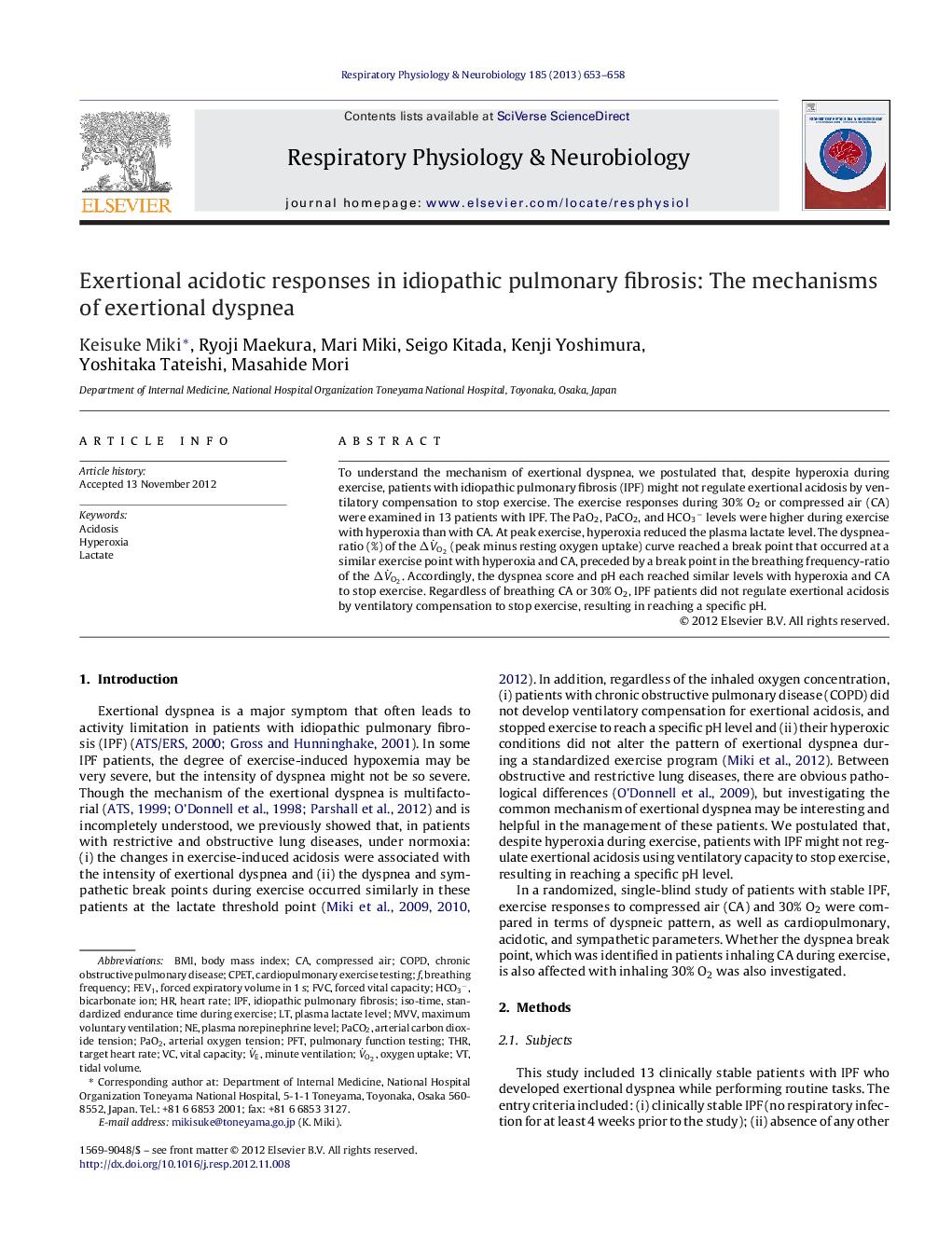| کد مقاله | کد نشریه | سال انتشار | مقاله انگلیسی | نسخه تمام متن |
|---|---|---|---|---|
| 5926274 | 1167351 | 2013 | 6 صفحه PDF | دانلود رایگان |

To understand the mechanism of exertional dyspnea, we postulated that, despite hyperoxia during exercise, patients with idiopathic pulmonary fibrosis (IPF) might not regulate exertional acidosis by ventilatory compensation to stop exercise. The exercise responses during 30% O2 or compressed air (CA) were examined in 13 patients with IPF. The PaO2, PaCO2, and HCO3â levels were higher during exercise with hyperoxia than with CA. At peak exercise, hyperoxia reduced the plasma lactate level. The dyspnea-ratio (%) of the ÎVËO2 (peak minus resting oxygen uptake) curve reached a break point that occurred at a similar exercise point with hyperoxia and CA, preceded by a break point in the breathing frequency-ratio of the ÎVËO2. Accordingly, the dyspnea score and pH each reached similar levels with hyperoxia and CA to stop exercise. Regardless of breathing CA or 30% O2, IPF patients did not regulate exertional acidosis by ventilatory compensation to stop exercise, resulting in reaching a specific pH.
⺠Effective treatments of exertional dyspnea in respiratory diseases remain an important approach. ⺠The exercise responses during hyperoxia or compressed air breathing on the dyspnea were examined in IPF patients. ⺠The exercise responses in IPF patients might be not to control exertional acidosis by ventilatory compensation.
Journal: Respiratory Physiology & Neurobiology - Volume 185, Issue 3, 1 February 2013, Pages 653-658